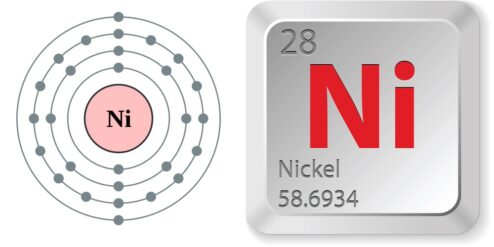Introduzione: Nickel is a naturally occurring element that is found in various foods and water. It plays a crucial role in the production of red blood cells, helps in the proper functioning of the immune system, and aids in the metabolism of nutrients. However, excessive exposure or ingestion of nickel can lead to a condition known as nickel toxicity or nickel overexposure, which can have detrimental effects on human health.
Understanding the Role of Nickel in Human Health
Nickel is a trace element that is essential for the human body in small quantities. It is involved in various metabolic processes and plays a role in the production of certain enzymes. Nickel also contributes to the health of the skin, hair, and nails. However, the human body has a limited capacity to process and eliminate excess nickel. When the intake of nickel exceeds the body’s ability to eliminate it, the excess nickel can accumulate in various organs and tissues, leading to a condition known as nickel toxicity.
Recognizing the Symptoms of Nickel Overexposure
The symptoms of nickel overexposure can vary depending on the level of exposure and the individual’s sensitivity to nickel. Common symptoms include skin rashes, itching, redness, and blisters, especially in individuals with nickel allergy. Other symptoms may include nausea, vomiting, diarrhea, headaches, dizziness, and fatigue. In severe cases, nickel overexposure can lead to more serious health problems such as kidney damage, lung disorders, and even cancer.
The Impact of Excessive Nickel on Skin Health
One of the most common manifestations of nickel overexposure is skin problems, particularly in individuals with nickel allergy. Contact with nickel-containing items can cause allergic contact dermatitis, characterized by redness, itching, and blisters. Prolonged or repeated exposure can lead to chronic dermatitis, which can cause the skin to become thickened and discolored. In severe cases, nickel overexposure can lead to skin ulcers and other serious skin conditions.
Digestive Issues Associated with Nickel Overload
Excessive intake of nickel can also affect the digestive system. Nickel can irritate the stomach lining, causing symptoms such as nausea, vomiting, and abdominal pain. In severe cases, it can lead to gastritis or ulcers. Nickel can also interfere with the absorption of other essential nutrients, leading to nutritional deficiencies. Long-term exposure to high levels of nickel can also increase the risk of developing certain types of cancer, including stomach and lung cancer.
Neurological Symptoms Indicating High Nickel Levels
High levels of nickel can also have neurological effects. Nickel can interfere with the normal functioning of the nervous system, leading to symptoms such as headaches, dizziness, and fatigue. In severe cases, it can cause tremors, loss of coordination, and other neurological disorders. Some studies have also suggested a possible link between high levels of nickel and neurodegenerative diseases such as Parkinson’s and Alzheimer’s.
Managing and Preventing Nickel Toxicity: Effective Strategies
The key to managing and preventing nickel toxicity is to minimize exposure to nickel. This can be achieved by avoiding nickel-containing items, using nickel-free products, and maintaining a balanced diet. Regular monitoring of nickel levels in the body can also help in early detection and management of nickel overexposure. In cases of severe nickel toxicity, medical intervention may be required to remove the excess nickel from the body.
Conclusioni: Nickel is an essential trace element that plays a crucial role in human health. However, excessive exposure or ingestion of nickel can lead to various health problems, ranging from skin conditions to digestive issues and neurological disorders. It is therefore important to be aware of the symptoms of nickel overexposure and to take steps to minimize exposure to nickel.
Per approfondire:
-
Nickel in Drinking-water – World Health Organization: This document provides comprehensive information on the health effects of nickel in drinking water.
-
Nickel Allergy – Mayo Clinic: This page provides detailed information on nickel allergy, including symptoms, causes, and treatment options.
-
Nickel Toxicity – National Center for Biotechnology Information: This article provides an in-depth review of nickel toxicity, including its causes, symptoms, and management strategies.
-
Nickel – Linus Pauling Institute: This page provides detailed information on the role of nickel in human health, including its functions, dietary sources, and health effects.
-
Nickel – Agency for Toxic Substances and Disease Registry: This page provides comprehensive information on nickel, including its sources, health effects, and strategies for reducing exposure.


